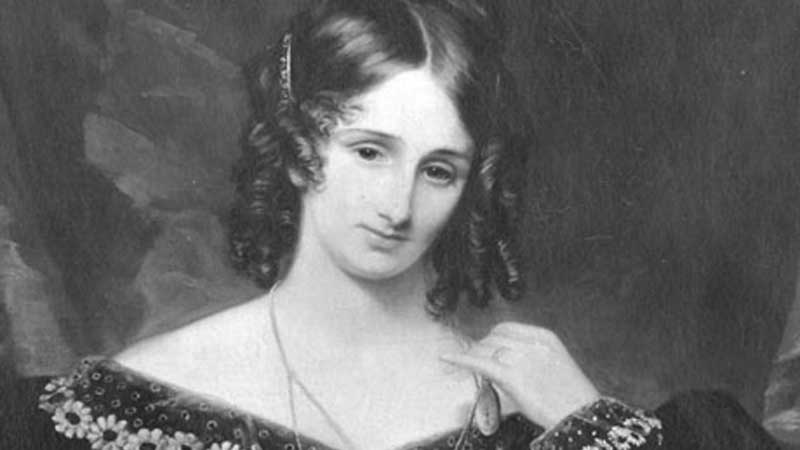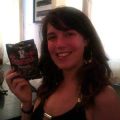KAJA FRANCK counts down 10 deadly British literary ladies
10. Lady Macbeth from Shakespeare’s Macbeth (1611)
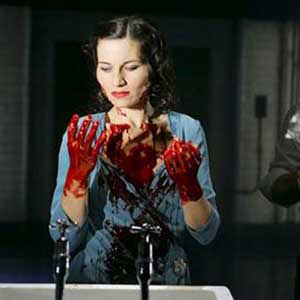
Evil, seductive, Machiavellian, power-hungry, manipulative, and not afraid to get her hands dirty, Lady Macbeth is a dastardly literary creation.
In a play suffused with the Gothic, the scene in which Lady Macbeth – driven mad by guilt – maniacally washes her hands of the blood of King Duncan is an exemplar of deranged cruelty. Shakespeare wrote good villains – for me, Iago is a precursor to Hannibal Lecter.
A defining feature of his villains is their inscrutability and Lady Macbeth is no exception. Critics still argue over what drives her to tempt Macbeth and it is this subtle characterisation that means performing the part remains a challenge to actresses even today.
9. Charlotte Dacre
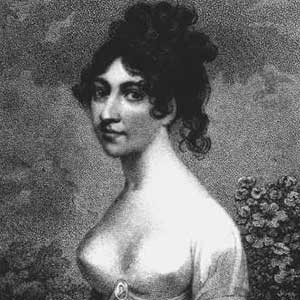
In a time when Gothic literature was split between the elegant romances of Radcliffe and horrors of authors such as Matthew Lewis, Charlotte Dacre entered the fray with her novel Zofloya (1806). She was influenced by the more florid Gothic that could be seen in imported German romances as wells as Lewis’ The Monk (1796).
Her pen name for Zofloya was Rosa Matilda after Lewis’ demonic temptress, Matilda. The novel features a woman killing her husband in order to run away with her black manservant, Zofloya, who turns out to be the Devil – standard fare for a Gothic novel. In a manner similar to the furore over ‘video nasties’, critics feared that her novel would inflame the imagination of her readers.
One critic even commented that Dacre was ‘afflicted with the dismal malady of maggots in the brain’. Nowadays, her heroine has been read as suffering from nymphomania. Certainly, it is a delight to read a text which features a woman who so openly enjoys her sexuality and revels in her cruelty.
8. Mary Shelley
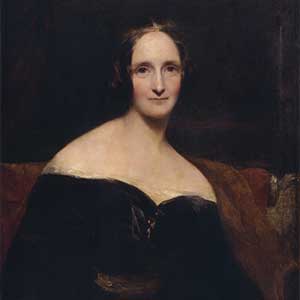
Even before the publication of Frankenstein (1818), Mary Shelley seemed destined to be an unconventional woman. The daughter of Mary Wollstonecraft, a proto-feminist author, and William Godwin, a liberal political philosopher, Shelley received a fulsome education.
She fell in love with the married Percy Bysshe Shelley and, ostracised by society, they travelled Europe before marrying following the suicide of Percy’s first wife. Of course, what is best known of her time in Europe, is that infamous night at the Villa Diodati during the year of dark, stormy nights brought on by the eruption of Mount Tambora.
A ghost story competition led to Mary creating the monster and his maker, Victor Frankenstein. Her monster was given compassion, decency, and a yearning to be fully human. The sympathetic protrayal of monstrosity echoes in Anne Rice’s vampires and even the rise of the redeemable zombie.
Read more about Mary Shelley and her creation of Frankenstein.
7. Wanda von Dunajew from Leopald von Sacher-Masoch’s Venus in Furs (1870)
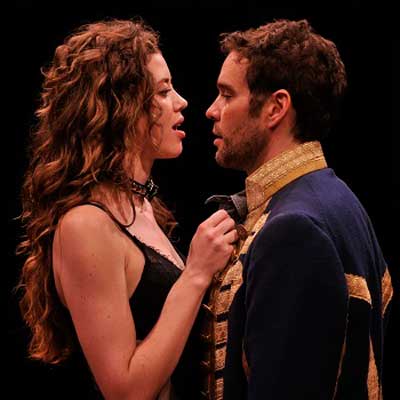
Before Fifty Shades of Grey (2011), there was Venus in Furs. One of the earliest texts to portray a BDSM relationship, the term ‘masochist’ is drawn from Sacher-Masoch’s name. The storyline is drawn from Sacher-Masoch’s relationship with Fanny Pistor and his enjoyment of female dominance.
In the novella, it is Wanda who wields the whip. Severin, Wanda’s lover, describes himself as a ‘suprasensualist’ and the intensity of sensation experienced by him is made explicit in the writing style.The prose is decadent and sumptuous full of sensuous descriptions and vivid recollections.
Wanda is cruel and delights in humiliating her submissive – finally leaving him for a beautiful young man who she feels can beat her at her own game (pun intended). There is a great deal of theatricality in Wanda’s behaviour and the reader is never sure how much of the relationship is performance and when it crosses the line into actual abuse.
The novel ends on a depressing note as Severin suggests that in any romantic relationship there has to be someone who dominates and one who submits.
6. Carmilla from Sheridan Le Fanu’s Carmilla (1871)
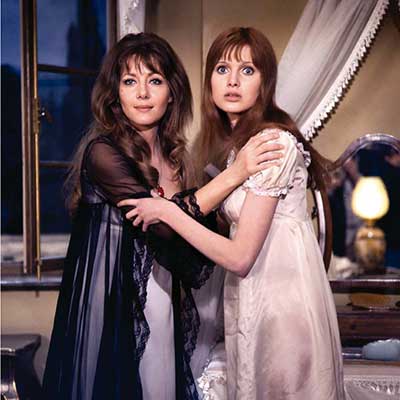
Bram Stoker was a fan of Carmilla and it appears that the short story ‘Dracula’s Guest’ (1914) was excised from early versions of Dracula (1897) because of the similarity between Carmilla and the Countess Dolingen of Gratz.
Since then, the name Carmilla has become synonymous with sapphic bloodsuckers thanks to Hammer Films’ The Karnstein Trilogy. Though these movies might make the lesbianism a little more explicit, it cannot be denied that Le Fanu’s novella brims with queer desire. Carmilla preys specifically on young woman who are overcome with the langour suggestive of very busy nights. (To say nothing of her arrival in her intended victim’s bedroom in the form of a black cat).
Her staking is often read as the paternal equivalent of ‘My daughter belongs to me’. Yet the ending of the novel suggests that Carmilla’s victim, Laura, remains enthralled with the beautiful vampiress.
It could even be said that Laura’s relationship with Carmilla opens her mind to ways of life beyond her stultifyingly safe home. In the manner of all evil women, Carmilla has a lasting effect.
5. Rosamund Marriot Watson
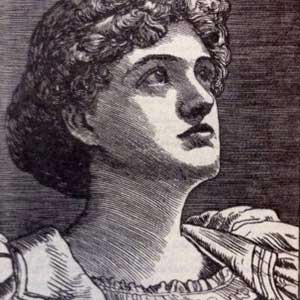
Like many of the authors in this list, Marriot Watson led an intriguing life. She committed adultery, divorced, had numerous children, and made her living as a successful novelist at a time when this was not considered suitable behaviour for a woman. Though popular in her lifetime, Marriot Watson’s work has been overlooked and dismissed as sensationalist.
Her novel The Blood of the Vampire (1897) was published in the same year as Stoker’s Dracula. Harriet Brandt, the vampire in question, is created when her grandmother is bitten by a bat whilst pregnant. Her mother becomes a psychic vampire, feeding on the life forces of her victims, and Harriet unknowingly suffers from the same tendency. Unlike Stoker’s Dracula, Harriet’s unnatural behaviour can be seen in her love of food – in one scene she polishes off an entire pack of expensive chocolate.
Notably, Marriot Watson’s father was Captain Frederick Marryat who wrote the short story ‘The White Wolf of the Hartz Mountains’ (1839). This is perhaps the first example of a female werewolf in English literature. The lycanthrope in question has a white pelt which leads us on nicely to my next deadly lady of literature.
4. Clemence Housman
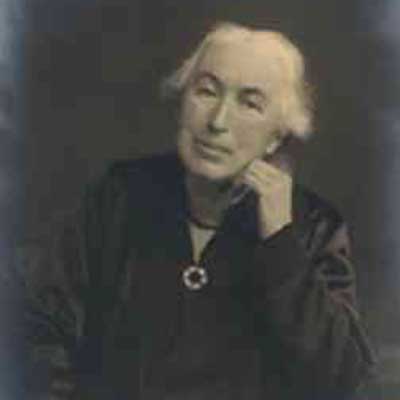
Housman was a writer, illustrator and involved with the fight for women’s suffrage. Her novella The Were-Wolf (1896) is a stunning piece of lycanthropic literature.
Featuring a female werewolf called White Fell, the story is set in a non-specific Scandinavian country in the past. The lack of specificity creates a dreamlike quality to the text which builds to the denouement in which the hero, Christian, races White Fell through a frozen landscape.
The novella is rich with symbolism and reads like a parable. White Fell is both masculine and feminine, strong and elegant. Her desire to kill is never explained but each victim receives a kiss before they die.
3. Arabella March in Bram Stoker’s The Lair of the White Worm (1911)
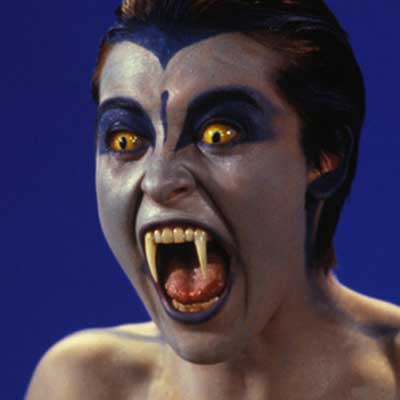
Partly based on the legend of the Lambton Worm, the villainess of Stoker’s novel, Arabella March, is a smorgasbord of delight for any psychoanalyst. Though she appears to be a seductive woman, she is in truth a snake-like worm who lives in a slimy, filthy hole. She also kills a mongoose or two. Though not as well-known as Dracula, this novel proves Stoker’s ability to create dangerous women with the addition of phallic symbolism. (Seriously, she’s a giant worm).
As with many evil women in literature, overt sexuality and troubling the binary between male and female signals your villainy. Notably, Arabella preys on children and bites them on the neck reminiscent of Stoker’s earlier vampiresses who invert the stereotype of the maternal female.
It all ends well though, as the eponymous lair is blown up through the convergence of lightening and dynamite and the antideluvian monstrosity is destroyed.
2. The White Witch in C.S. Lewis’ The Lion, the Witch and the Wardrobe (1950)
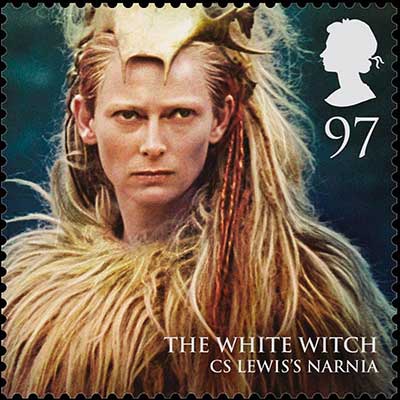
Edmund’s temptation by turkish delight would seem solely ridiculous if not for the chilling presence of the White Witch. The dark forerunner to Disney’s Elsa, this wintery sorceress keeps her kingdom under the thrall of an endless winter – as an S.A.D. Sufferer, this seems an unimaginable cruelty for the inhabitants of Narnia.
She also has a penchant for turning her enemies into statues and her surveillance systems would make the KGB jealous.
In another telling sign of evil, she is surrounded by a pack of voracious wolves who do her bidding. What everyone remembers though is that she kills Aslan – first shaving him in an act of humiliation and then tying him down.
In this Biblical metaphor, Aslan is God making the White Witch an incarnation of Satan. And you can’t get much more evil than that.
1. Angela Carter
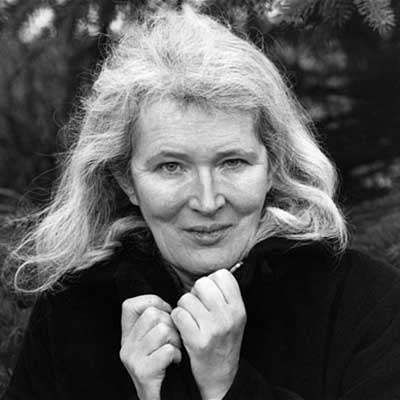
A common theme amongst evil women is that they exist outside of gender stereotypes – be it in terms of their propensity to violence or the expression of their sexuality.
Come the advent of second-wave feminism, many storytellers were eschewing this model. Amongst them was Angela Carter. In his obituary for Carter, Salman Rushdie expressed his belief that English literature had lost ‘its high sorceress, its benevolent witch-queen’.
Notably, Carter revisioned traditional fairytales to subvert and undermine the gender binaries. Whilst this endeavour made her troublesome for the establishment, it was the darkly seductive and Gothic quality of her prose that appealed.
Dense, decadent, and delightful, Carter wove a spell over her reader and, remniscent of her predecessor Dacre, inflamed the imagination. She remains a potent and powerful member of this lineage of dangerous literary women.

